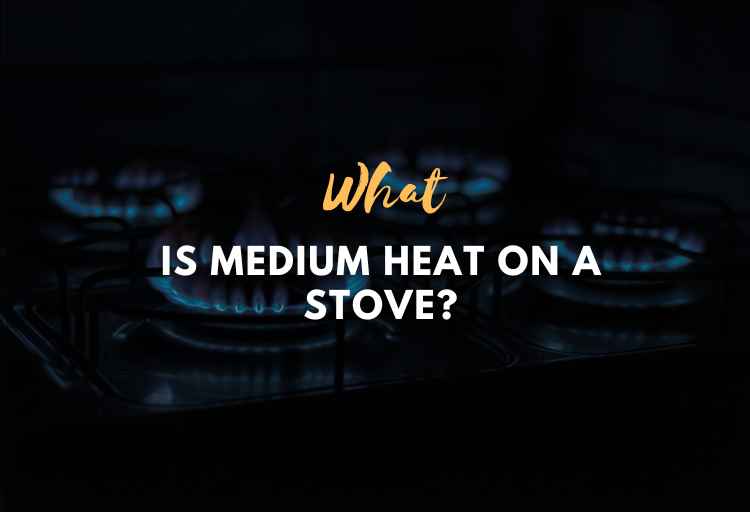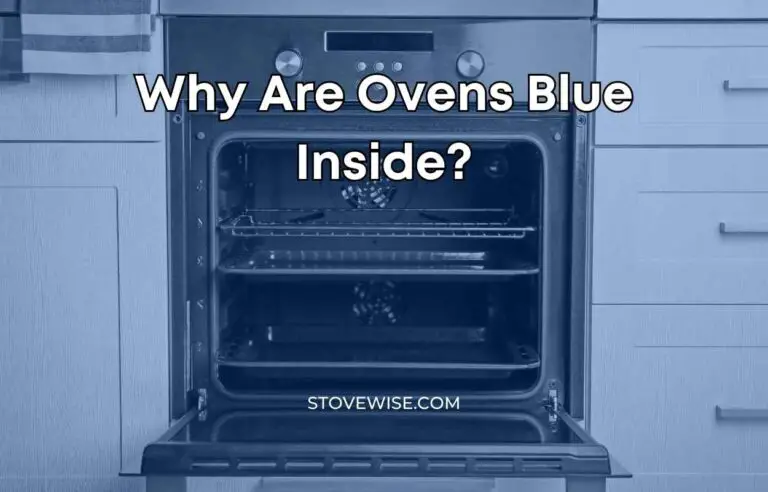Does a Gas Stove Need Electricity?
While gas is the major source of heat in a gas stove, various operations, and features may be powered by electricity.
Does a Gas Stove Need Electricity? Yes, a gas stove requires electricity for certain functions such as operating the oven, lighting the pilot light, powering the thermostat, igniting the burners, and operating the control panel. However, the heat itself is generated by burning gas, making gas stoves a dependable choice during power outages.
Gas stoves offer advantages like faster heating, precise temperature control, and greater energy efficiency compared to electric stoves. It’s crucial to check the specific model’s electricity requirements and ensure proper gas and electrical connections in your home.

Contents
- How Does a Gas Stove Work?
- Does a Gas Stove Need Electricity?
- Will a Gas Stove Start Without Electricity?
- Which Gas Stoves Do Not Require Electricity?
- Can a Gas Stove Work Without Being Plugged In?
- Can You Manually Light a Gas Stove with Electric Ignition
- How Much Electricity Does a Gas Stove Use?
- What Are the Electrical Requirements for a Gas Stove?
- How Much Electricity Does a Gas Stove Use?
- Conclusion
How Does a Gas Stove Work?
If you’re wondering how a gas stove works, you’re not alone. A gas stove is a popular choice for cooking because it offers instant heat and precise temperature control. Here’s a breakdown of how a gas stove works:
Burners and Flame
The burners on a gas stove are where the flame is produced. When you turn the burner knob, gas is released from the gas line and flows to the burner.
The gas mixes with air and is ignited by a spark or pilot light. The flame heats up the burner, which in turn heats up the pot or pan that’s placed on top of it.
Fuel
The fuel for a gas stove is natural gas or propane. Natural gas is a fossil fuel that is extracted from the ground and transported through pipelines. Propane is a byproduct of natural gas processing and is stored in tanks.
Pilot Light and Ignition
Older gas stoves have a pilot light, which is a small flame that burns continuously. When you turn the burner knob, gas flows to the pilot light and is ignited by a spark. The pilot light then ignites the main burner flame.
Newer gas stoves have an electronic ignition system, which uses a spark to ignite the gas. When you turn the burner knob, an electric signal is sent to the igniter, which produces a spark that ignites the gas.
Gas Line
The gas line is what connects the stove to the natural gas or propane supply. It’s important to make sure that the gas line is properly installed and maintained to prevent gas leaks.
Manually Ignite
If you’re in a situation where there’s a power outage or the electronic ignition system isn’t working, you can manually ignite the burner. Simply turn the burner knob to the “light” position and use a match or lighter to ignite the gas.
In summary, a gas stove works by using natural gas or propane as fuel to produce a flame on the burners. The flame heats up the burner, which in turn heats up the pot or pan.
The ignition system, whether it’s a pilot light or electronic ignition, produces a spark to ignite the gas. And in case of an emergency, you can manually ignite the burner with a match or lighter.
Does a Gas Stove Need Electricity?
If you’re thinking of getting a gas stove, you might be wondering if it needs electricity to work. The answer is yes and no, depending on the type of gas stove you have. In this section, we’ll explore the different types of gas stoves and their power requirements.
Electronic Ignition Systems
Most modern gas stoves have electronic ignition systems, which means they need electricity to work. These systems use a spark to ignite the gas, which means you don’t need matches or pilot light.
The electricity is also used to power the clock, lights, and other features on the stove. If you have an electronic ignition system, make sure your stove is connected to a dedicated circuit to prevent overloading your electrical system.
Traditional Gas Stoves
Traditional gas stoves, on the other hand, do not require electricity to work. These stoves use a pilot light to ignite the gas, which means you need matches or a lighter to light the stove. They also don’t have any electrical features like clocks or timers.
If you have a traditional gas stove, make sure you have matches or a lighter on hand in case of a power outage.
When it comes to temperature control, gas stoves are known for their precision. They heat up quickly and respond instantly to changes in temperature.
Some gas stoves also come with convection fans to distribute heat evenly throughout the oven. Gas stoves are also more energy-efficient than electric cooktops, which means you’ll save money on your energy bills in the long run.
Will a Gas Stove Start Without Electricity?
Even without electricity, a gas burner can start and produce heat. The heat is produced by the combustion of gas, which is ignited by a spark or flame.
While some features like oven ignition, thermostat control, igniters, clock, and control panel require electricity, the essential function of generating heat is independent of electrical power. This makes gas stoves reliable during power outages.
However, it’s important to note that specific features and functions may be affected by the lack of electricity, so it’s advisable to consult the manufacturer’s instructions and specifications for the particular gas stove model in question.
Which Gas Stoves Do Not Require Electricity?
A basic, traditional gas stove that doesn’t need electricity is one that doesn’t have any electrical parts. Most of the time, you have to use a match or lighter to manually light the heaters on these stoves.
They lack features like oven ignition, electronic controls, clocks, and digital displays. While they may lack the convenience and advanced functions of electrically powered gas stoves, they are highly reliable during power outages.
It’s important to carefully check the specifications or consult with a retailer to ensure you are purchasing a gas stove that does not require electricity.
Can a Gas Stove Work Without Being Plugged In?
A gas stove can operate without being plugged in. Natural gas or propane, which is used to generate heat for cooking, is the major source of energy for a gas stove.
The burners and oven can be ignited manually without the need for electrical power. However, it’s important to note that certain features of the gas stove, such as electronic ignition, oven lights, timers, and control panels, may require electricity to function.
These features won’t operate without being plugged in or having a power source. Nonetheless, the basic cooking functionality of a gas stove can be utilized even if it is not plugged in or during power outages, making it a reliable cooking option.
Can You Manually Light a Gas Stove with Electric Ignition
No, you cannot manually light a gas stove with an electric ignition. Gas stoves with electric ignition systems rely on an electrical spark to ignite the gas and start the burners.
If there is a power outage or the stove is not plugged in, the electric ignition will not work. In such cases, it is necessary to use alternative methods, such as a match or lighter, to manually light the burners.
However, it is important to exercise caution and follow the manufacturer’s instructions when manually lighting a gas stove to ensure safety and avoid any potential hazards.
How Much Electricity Does a Gas Stove Use?
The amount of electricity a gas stove uses varies depending on the model and its features. Gas stoves typically require electricity for functions like oven ignition, thermostat control, igniters, clocks, and control panels.
The power consumption can range from a few watts to around 600 watts, depending on the specific model and the features it offers. However, it’s important to note that the electricity used by a gas stove is relatively minimal compared to other household appliances.
o determine the exact electricity usage, it is best to refer to the manufacturer’s specifications or consult the product manual for the specific gas stove model in question.
What Are the Electrical Requirements for a Gas Stove?
The electrical requirements for a gas stove can vary depending on the model and its features. Generally, gas stoves require a standard 120-volt electrical outlet to power functions like oven ignition, thermostat control, igniters, clocks, and control panels.
It is important to ensure that the electrical outlet is properly grounded and meets the voltage and current requirements specified by the manufacturer.
Additionally, some gas stoves may have specific wiring or circuit requirements, so it is advisable to consult the manufacturer’s instructions or consult with a qualified electrician to ensure proper installation and electrical compatibility.
How Much Electricity Does a Gas Stove Use?
The amount of electricity a gas stove uses can vary depending on factors like the stove’s size, the number of burners, and the enabled features.
On average, a gas stove consumes around 1.5 amps during operation, with circuit capacities typically ranging from 15 to 20 amps. However, gas stoves generally use minimal electricity compared to other household appliances.
To determine the exact electricity usage for a specific gas stove model, it is best to consult the manufacturer’s specifications or the product manual.
By using only necessary burners, turning them off when not in use, and maintaining clean burners, you can further reduce electricity consumption.
Conclusion
To summarize, while a gas stove requires power for certain purposes such as oven ignition, thermostat control, and electronic features, its basic function of creating heat does not.
During power outages, gas stoves are dependable and provide benefits such as faster heating, accurate temperature control, and energy efficiency.
In comparison to other equipment, a gas burner consumes very little electricity. Check the exact model’s electricity requirements and make sure your home has sufficient gas and electrical connections.






